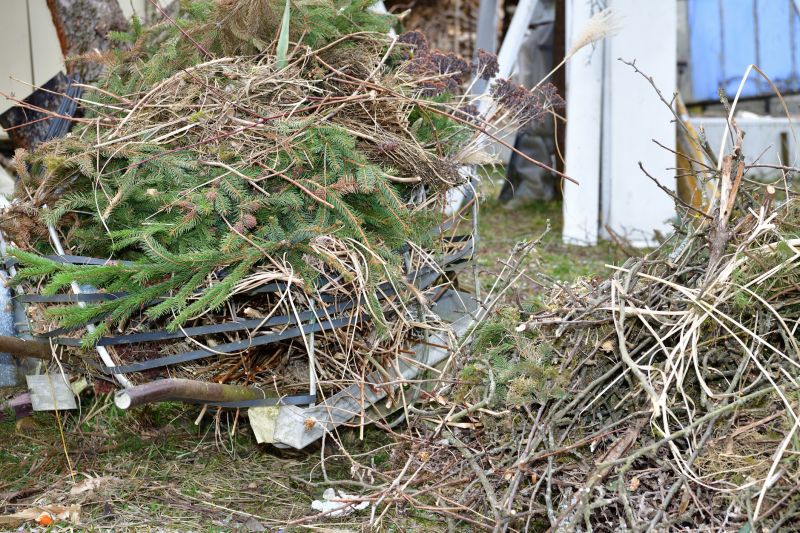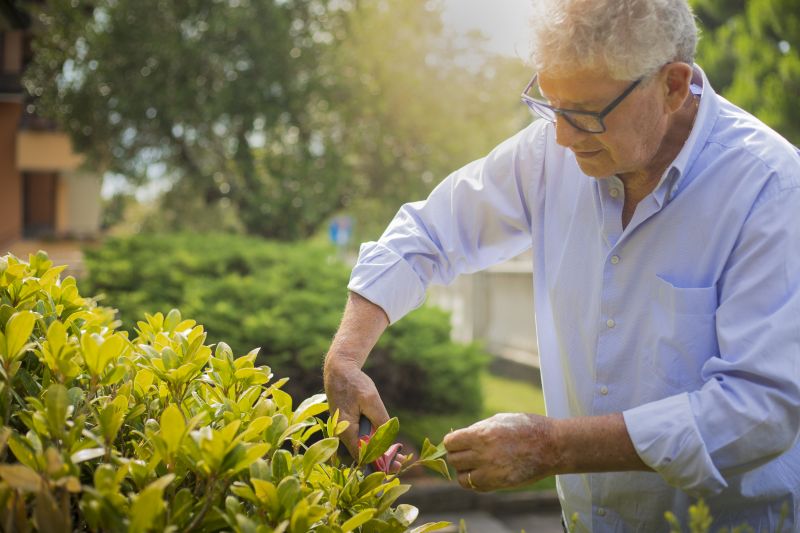Get Undergrowth Removal in Kitsap County, WA
Undergrowth removal services for property owners in Kitsap County and nearby areas help clear overgrown bushes, shrubs, and invasive plants to improve safety, aesthetics, and accessibility.
Undergrowth removal services are essential for property owners in Kitsap County, WA, seeking to improve the safety, appearance, and accessibility of their outdoor spaces. Overgrown vegetation can obstruct views, create fire hazards, or hinder regular maintenance efforts. Whether preparing for a landscaping project, clearing space for new features, or simply maintaining a tidy yard, property owners often explore local options to find the right professionals for the job. This process involves comparing service providers to ensure the work aligns with individual needs and property conditions.
By exploring available local contractors, property owners can discover experienced service providers equipped to handle undergrowth removal efficiently and effectively. Finding the right team involves considering their expertise, reputation, and ability to tailor services to specific property requirements. Keep reading to learn more about how local specialists can help transform outdoor spaces and meet the unique needs of Kitsap County residents.
- Undergrowth removal - needed when overgrown plants and shrubs threaten to encroach on pathways or structures in residential yards.
- Brush clearing - essential for preparing land for new landscaping or construction projects in neighborhoods across Kitsap County.
- Overgrown lot cleanup - required when vacant lots become dense with invasive plants, making them difficult to access or maintain.
- Vegetation control - important for preventing fire hazards in wooded areas or hillside properties in nearby communities.
- Bush and shrub removal - necessary when overgrown bushes block views, sunlight, or access around homes and properties.



Undergrowth removal services involve clearing away dense vegetation, shrubs, weeds, and overgrown plants that can quickly take over a yard or property. This process typically includes trimming, cutting back, and removing unwanted underbrush to improve the appearance and safety of outdoor spaces. Service providers use specialized tools to efficiently clear away thick growth, making properties look neat and well-maintained. This work is often necessary for homeowners who want to restore a yard’s natural beauty or prepare the space for landscaping projects.
Overgrown undergrowth can cause a variety of problems for property owners. It can obstruct pathways, create hiding spots for pests, and even pose fire hazards during dry seasons. Additionally, excessive vegetation can block sunlight from reaching grass and garden beds, leading to unhealthy plant growth. Removing undergrowth helps prevent these issues by reducing fire risks, improving visibility, and promoting healthier landscaping. It also makes outdoor areas safer and more accessible for family activities, gardening, or simply enjoying the yard.
This service is commonly used on residential properties, especially those with larger yards or gardens that have been neglected over time. It’s also applicable for properties that are in the process of renovation or landscaping, where clearing out overgrowth is a necessary first step. Landlords and property managers may also seek undergrowth removal to maintain their rental properties and ensure they are safe and visually appealing for tenants. Whether it’s a suburban home, a rural property, or a commercial site with outdoor space, local contractors can provide tailored undergrowth removal solutions.
Homeowners often turn to undergrowth removal services when their yards become difficult to manage or visually unappealing. Overgrown bushes, weeds, or tangled vines can make outdoor spaces feel cluttered and uninviting. Clearing this vegetation not only enhances curb appeal but also helps maintain the health of existing plants by reducing competition for nutrients and sunlight. Service providers can handle a variety of situations, from routine maintenance to emergency clearance after storms or storms-related damage, ensuring properties stay safe, tidy, and ready for outdoor enjoyment.
The overview below groups typical Undergrowth Removal projects into broad ranges so you can see how smaller, mid-sized, and larger jobs often compare in Kitsap County, WA.
In many markets, a large share of routine jobs stays in the lower and middle ranges, while only a smaller percentage of projects moves into the highest bands when the work is more complex or site conditions are harder than average.
Smaller Jobs - Typical costs for removing small undergrowth areas range from $250-$600. Many routine projects fall within this range, especially for clearing overgrown patches of yard or garden beds.
Moderate Projects - Medium-sized undergrowth removal, such as overgrown shrubbery or dense brush, usually costs between $600-$1,500. These projects are common and often involve more extensive clearing or partial site cleanup.
Larger or Complex Jobs - Larger projects, including extensive undergrowth or overgrown property clearing, can range from $1,500-$3,000. Fewer projects reach this tier, typically involving significant site preparation or difficult terrain.
Full Property Overhaul - Complete removal of extensive undergrowth across large properties can exceed $3,000 and may reach $5,000+ for very large or complicated sites. Such projects are less frequent and often require specialized equipment or multiple days of work.
Actual totals will depend on details like access to the work area, the scope of the project, and the materials selected, so use these as general starting points rather than exact figures.
Brush Clearing Projects - Local contractors often handle clearing overgrown brush and small trees, utilizing similar tools and planning as undergrowth removal services.
Landscape Maintenance - Professionals in landscaping frequently perform weed and unwanted plant removal, requiring similar techniques and site assessment skills.
Garden Restoration - Restoring neglected gardens involves removing invasive plants and overgrowth, aligning with the skills used in undergrowth removal.
Trail and Pathway Clearing - Clearing overgrown pathways and trails involves similar planning and equipment to manage dense vegetation effectively.
Storm Damage Debris Removal - Clearing fallen branches and debris after storms often overlaps with the equipment and site cleanup methods used in undergrowth removal.
Fence Line Clearing - Removing vegetation along fence lines requires similar techniques to maintain clear boundaries and prevent overgrowth encroachment.

When comparing professionals for undergrowth removal services, it’s important to consider their experience with similar projects in the area. Homeowners should inquire about the types of properties and landscapes they have worked on, ensuring that the service provider has a history of handling undergrowth removal in environments comparable to their own. A contractor's familiarity with local plant life and terrain can influence the effectiveness and efficiency of the work, making it worthwhile to seek out those who have successfully completed comparable projects nearby.
Clear, written expectations are essential when evaluating local contractors for undergrowth removal. Homeowners should ask for detailed descriptions of the services offered, including what areas will be cleared, the methods used, and any post-service cleanup. Having this information in writing helps prevent misunderstandings and provides a solid basis for comparing different providers. It’s also helpful to understand what the contractor considers within their scope of work, so expectations align before any work begins.
Reputable references and strong communication are key indicators of reliable service providers. Homeowners can request references from previous clients who had similar work done, providing insight into the contractor’s professionalism, quality of work, and reliability. Good communication throughout the process-such as prompt responses to questions and clear explanations-can make the experience smoother and more predictable. While the site introduces homeowners to local options, it does not perform the work itself; instead, it helps connect individuals with qualified local contractors capable of handling undergrowth removal projects effectively.
Property owners in Kitsap County, WA use Undergrowth Removal services for practical projects around their homes and businesses. This guide focuses on everyday jobs and straightforward project options.


Undergrowth removal services are often sought by property owners in Kitsap County who want to improve the appearance and safety of their outdoor spaces. Overgrown shrubs, dense underbrush, and tangled vegetation can make yards look neglected and may hinder access to certain areas. Local contractors can help clear away this excess growth, making properties more inviting and easier to maintain. Whether preparing a yard for upcoming seasons or simply wanting to tidy up, many residents turn to experienced service providers for efficient undergrowth removal.
In addition, property owners might look for undergrowth removal when dealing with issues like preventing pest habitats or reducing fire risks. Overgrown areas can harbor rodents, insects, or other unwanted pests, and clearing them can contribute to a healthier outdoor environment. Local contractors can assess specific needs and handle the job, providing a practical solution for those seeking to keep their properties safe and well-kept. This type of work is common for homeowners, landowners, and commercial property managers across Kitsap County.
What is undergrowth removal? Undergrowth removal involves clearing away dense vegetation, shrubs, and small plants that grow beneath trees and in garden areas to improve appearance and accessibility.
Why should I consider professional undergrowth removal? Professional service providers have the tools and expertise to safely and effectively clear overgrown areas, helping to maintain property aesthetics and prevent potential hazards.
What areas can be addressed with undergrowth removal? Local contractors can handle overgrown gardens, wooded property edges, pathways, and other outdoor spaces where excessive vegetation has taken hold.
How do service providers typically approach undergrowth removal? They assess the area, use appropriate tools to cut back or remove unwanted plants, and dispose of debris to restore the landscape’s clarity and health.
Is undergrowth removal suitable for all types of properties? Yes, professionals can adapt their methods to suit residential yards, commercial landscapes, or natural areas requiring vegetation control.
Enhance curb appeal - removing undergrowth can improve the appearance of a yard, making it more inviting for family gatherings or outdoor activities.
Clear pathways and entrances - eliminating overgrown plants near walkways ensures safe and accessible entry points for visitors.
Create space for gardening or outdoor projects - removing dense undergrowth opens up areas for planting flowers, vegetables, or setting up outdoor furniture.
Prepare for seasonal changes - clearing undergrowth helps prevent pests and prepares the landscape for upcoming weather conditions.

If you are thinking about Undergrowth Removal for a property in Kitsap County, WA, this guide is meant to help you understand the work, the typical project types, and how different options might fit your plans.
When you are ready, you can use the quote form on this page to share a few details about your project. From there, local pros can review the basics and respond with options that match what you have in mind.
